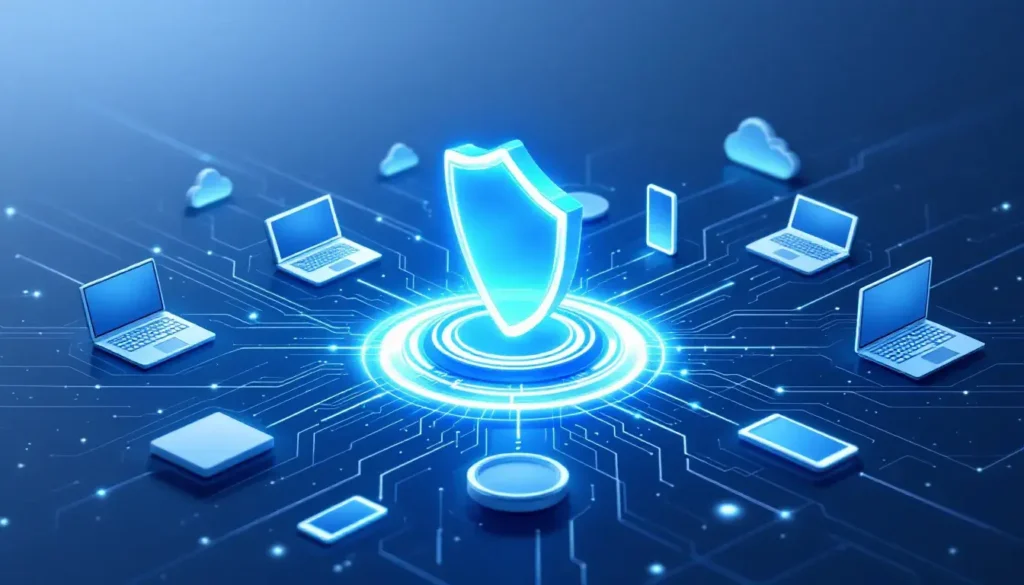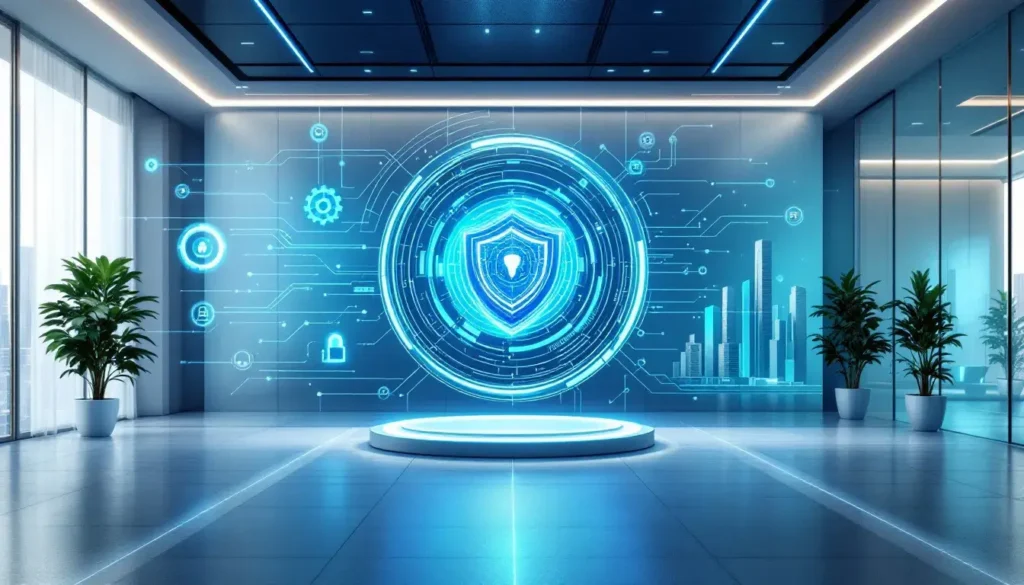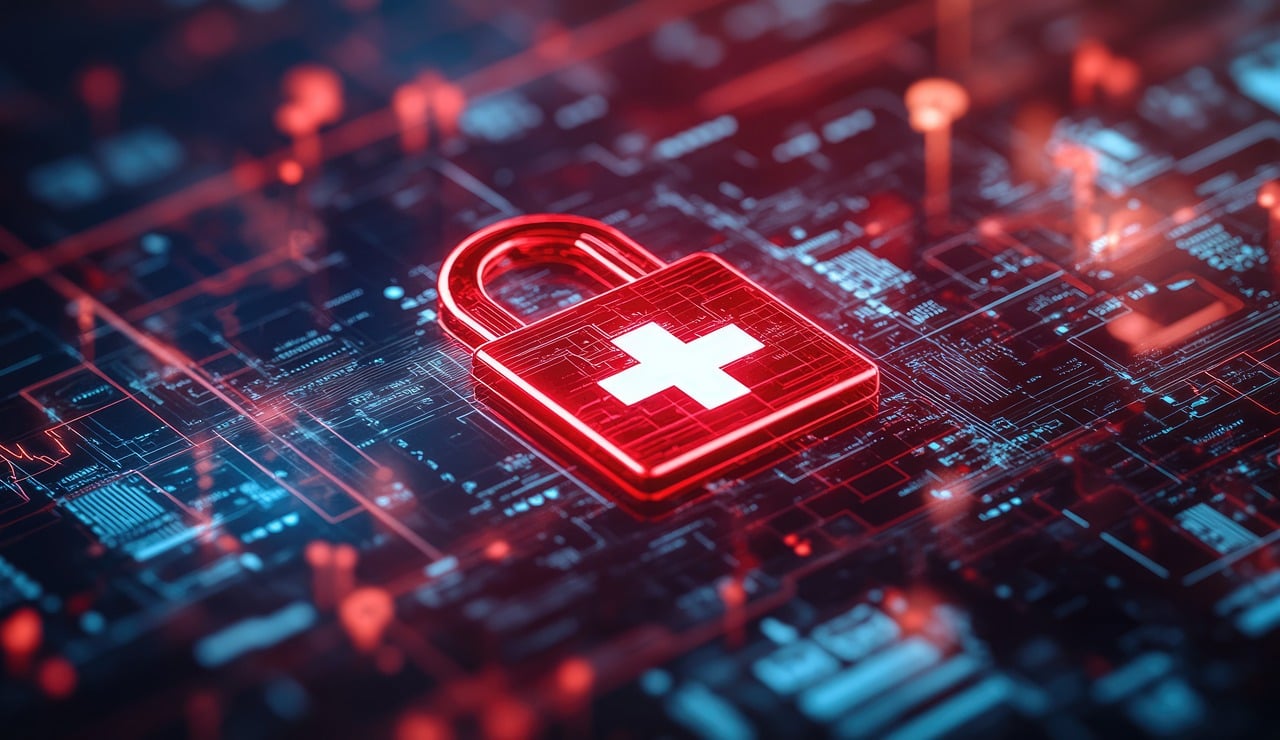What Is Endpoint Protection?
Endpoint protection is a security measure that protects devices like laptops and servers from cyber threats. It is essential for maintaining device and network security.
This article will explain what endpoint protection is, its importance, and how it differs from antivirus software.
Understanding endpoint protection
Endpoint protection refers to security solutions designed to protect various endpoint devices such as laptops, desktops, and servers from cyber threats.
Its primary purpose is to safeguard these devices from being compromised by malicious entities, ensuring both security and compliance.
In corporate networks, any device that connects outside its firewall is considered an endpoint, encompassing servers, laptops, and remote devices.

The primary functions of endpoint protection platforms include securing endpoints, monitoring data access, and ensuring compliance with security policies. These platforms provide a comprehensive security posture, integrating multiple security tools to protect endpoints effectively.
As the digital landscape evolves, understanding and implementing endpoint protection becomes increasingly vital to secure an organization’s digital assets.
Importance of endpoint protection in modern businesses
With the rise of remote work, the need for robust endpoint security has become paramount to safeguard sensitive information.
The increase in vulnerabilities from Bring Your Own Device (BYOD) policies raises security risks for organizations as personal devices connect to company networks.
The 2024 Global Threat Report highlights a rise in data theft, cloud breaches, and malware-free attacks, underscoring the sophisticated approaches of cyber adversaries.
Key trends from the report include covert activities targeting sensitive data, reflecting the advanced methods employed by cybercriminals.
By 2025, 32.6 million Americans, around 22% of the workforce, are expected to work remotely, with another 28.2% mixing remote and in-office work. This shift necessitates robust endpoint protection to detect suspicious activity and prevent risks for remote devices.
Implementing endpoint protection is essential for businesses to mitigate the risks associated with modern cybersecurity threats.
Safeguarding endpoints against unauthorized access and malicious activities helps organizations protect sensitive data and maintain network integrity.
Difference between endpoint protection and traditional antivirus solutions
Traditional antivirus solutions primarily focus on finding and removing known viruses, whereas endpoint protection covers a broader range of threats, including malware, ransomware, and zero-day attacks.
Endpoint protection employs advanced detection methods such as machine learning and behavioral analysis, which are absent in traditional antivirus software. This allows for a more proactive approach to security, identifying potential threats before they can cause harm.
Modern endpoint protection platforms (EPP) include a suite of tools such as firewalls, intrusion prevention, and endpoint detection and response (EDR), which traditional antivirus software typically lacks.

These platforms combine various security tools, enhancing the comprehensive security posture that traditional antivirus alone cannot achieve.
The limitations of traditional antivirus software, which detect less than half of all malware attacks, present a significant gap compared to the capabilities of endpoint protection solutions.
With 86% of eCrime actors using evasion techniques against traditional antivirus solutions, the need for advanced techniques like threat hunting and EDR becomes more apparent.
Endpoint protection solutions offer a more robust defense against modern cyber threats, making them a critical component of an organization’s cybersecurity strategy.
Core components of an effective endpoint protection solution
An effective endpoint protection solution encompasses several core components, each designed to provide comprehensive security. Continuous breach prevention and real-time monitoring are fundamental.
Advanced threat detection and investigation and remediation capabilities enable organizations to quickly adapt to new threats, ensuring prompt action against emerging risks.
Secure SSDs with built-in encryption further enhance hardware-assisted endpoint security measures. The following subsections will delve into these components in more detail.
Advanced threat detection
Advanced endpoint security systems utilize machine learning to adapt to new threats based on previous attack data. This enhances behavioral analysis, allowing the system to spot threats by examining past data and adapting to new attack methods.
Behavioral analysis in endpoint protection identifies unusual patterns like atypical login attempts and unauthorized access, providing a robust defense against potential threats.

User behavior analytics (UBA) is another crucial aspect, used to detect insider threats and unusual user behavior. Monitoring for ransomware and data exfiltration threats is fundamental to protect organizational data effectively.
The integration of advanced analytics in endpoint protection allows for quicker identification of suspicious activities, enhancing the overall security posture.
Endpoint detection and response (EDR)
Continuous monitoring is essential for preventing silent failures in endpoint security. Endpoint Detection and Response (EDR) solutions track endpoint activities and analyze data to provide actionable insights and threat responses.
The response capabilities of EDR include real-time containment measures, contrasting with traditional antivirus that primarily focuses on malware removal.
The primary purpose of EDR is to investigate and fix security issues remotely, enhancing overall incident response capabilities. By providing continuous monitoring and real-time threat containment, EDR solutions offer a more dynamic and effective approach to endpoint security.
Data encryption and data loss prevention
Data encryption ensures that sensitive information is unreadable to unauthorized users, providing a critical layer of security.
Encryption helps protect sensitive data by converting it into a coded format that requires a specific key or password to access. This makes it significantly more difficult for cybercriminals to steal or misuse sensitive information.
Data loss prevention (DLP) strategies are crucial for safeguarding sensitive information stored on endpoints from theft or damage.
DLP identifies sensitive information by using specific keywords, predefined labels, or associated tags to monitor and prevent unauthorized access.
Implementing robust encryption and DLP measures helps organizations protect their most valuable data assets.
How endpoint protection works
The installation of endpoint protection solutions establishes a central security system across devices, creating a cohesive defense against cyber threats.
These solutions continuously monitor devices for vulnerabilities, using automated threat spotting to identify and address potential risks. Behavioral analysis is utilized to track unusual activities, improving the detection of potential threats.

Machine learning algorithms are often applied in endpoint protection to enhance threat detection accuracy.
These solutions provide response tools that continuously monitor endpoints for threats and offer automated response mechanisms to isolate infected devices and remediate threats swiftly.
Integrating these advanced technologies allows endpoint protection solutions to offer a proactive and effective approach to cybersecurity.
Types of endpoint protection solutions
There are various types of endpoint protection solutions that cater to different security needs:
- Endpoint Protection Platforms (EPP) combine multiple security tools for comprehensive endpoint security.
- Extended Detection and Response (XDR) frameworks correlate data from various security tools for enhanced threat detection.
- IoT Device Protection addresses the unique vulnerabilities of connected devices.
The following subsections will explore these solutions in more detail.
Endpoint protection platforms (EPP)
An Endpoint Protection Platform (EPP) is a holistic solution. It integrates several features such as antivirus, firewall, EDR, intrusion prevention systems, and application control. EPP primarily aims to secure various endpoints. It protects them from a wide range of cyber threats.
Integrating these tools allows EPP to enhance overall protection and simplify device management, offering a unified approach to endpoint security.
Extended detection and response (XDR)
Extended Detection and Response (XDR) is a cybersecurity framework that correlates data from various security tools to identify threats using machine learning algorithms.
Unlike EDR, which primarily targets known malware, XDR provides a broader scope by integrating data from multiple sources for enhanced threat detection. This correlation allows for a more comprehensive understanding of the threat landscape, enabling more effective responses.
XDR solutions can automate responses like quarantining infected devices, thereby reducing the time and effort required for threat mitigation.
Providing a holistic view of security incidents and automating responses, XDR significantly enhances an organization’s security posture, making it essential for modern endpoint protection strategies.
IoT device protection
IoT devices have several vulnerabilities. These include the use of default passwords, lacking security updates, and communication protocols that are not secure.
These vulnerabilities make IoT devices attractive targets for cybercriminals. Protecting IoT devices involves regular monitoring for suspicious activities, using secure communication protocols, and restricting access.
Refrigerators, doorbells, smart bulbs, dash cams, and home security sensors are common examples of IoT devices.
These gadgets enhance convenience and security in daily life. Each of these devices, if compromised, can provide a gateway to the broader network.
Benefits of implementing endpoint protection solutions
Implementing endpoint protection solutions offers numerous benefits, including enhanced security by monitoring and protecting all connected devices against unauthorized access.
Organizations can save up to $2.2 million by utilizing endpoint protection solutions, leading to significant reductions in security incidents and related costs.
The following subsections will explore these benefits in more detail.
Centralized management console
The purpose of a centralized management console in endpoint protection solutions is to monitor, protect, investigate, and respond to incidents.
Centralized management in endpoint protection refers to managing multiple devices from a central location, enabling IT administrators to monitor and update policies from a single dashboard.
This simplifies the management of endpoints and enhances overall security efficiency.
Improved threat detection and response
Effective endpoint protection enhances the capacity to identify and react to threats promptly, minimizing potential damage.
Advanced endpoint protection solutions can manage threats that utilize evasion tactics to bypass traditional security measures. Real-time alerts from endpoint protection systems enable quicker responses to potential threats, ensuring that security teams can act swiftly to mitigate risks.

Endpoint security solutions help maintain safety for remote devices, continuously monitoring them even when they are outside the corporate network.
This continuous monitoring is crucial for protecting remote and mobile devices, which are often more vulnerable to cyber threats.
Enhanced data security
Endpoint protection solutions often include encryption features that safeguard sensitive data from unauthorized access.
Robust endpoint protection frameworks incorporate strong encryption measures to protect sensitive information, ensuring that only authorized users can access it.
This is essential for protecting sensitive corporate information from breaches and unauthorized access, especially when considering endpoint protection vs other security measures.
Encryption is a critical component in the protection of sensitive data, making it unreadable to unauthorized users. Integrating encryption into endpoint protection solutions ensures that valuable data assets remain secure, even during a security breach.
Steps to implement endpoint protection in your organization
Deploying endpoint protection solutions requires a structured approach, including identifying vulnerabilities and selecting appropriate software. Establishing a step-by-step approach is vital for effectively deploying endpoint protection solutions.
The following subsections will outline the key steps to implement endpoint protection in your organization.
Identifying all endpoints
A comprehensive inventory of connected devices is essential to ensure that all endpoints are recognized and secured.
Monitoring all devices connected to a network is crucial in minimizing potential security threats and achieving continuous and comprehensive visibility.
Automated tools can help maintain an accurate inventory of all connected devices, which is crucial for security.
Assessing vulnerabilities
Deploying endpoint protection can help maintain regulatory compliance by protecting sensitive information. Once all endpoints are identified, it’s crucial to assess the sensitivity of data and potential impact on the network.
During vulnerability assessment, it’s important to analyze security threat such as ransomware, phishing, and malware.
Selecting and deploying endpoint protection software
Scalability is an essential factor in endpoint protection solutions as it allows the software to adapt to the growing needs of a business.
An effective endpoint protection solution should evolve with your company, adjusting to new security threats without incurring excessive costs. Choosing the right endpoint protection software is crucial for ensuring your organization’s cybersecurity posture.
Effective endpoint protection solutions should allow for seamless integration with existing IT setups to enhance overall security management.
User-friendly endpoint solutions that can integrate smoothly with existing systems are key to successful deployment and ongoing management.
Choosing the right endpoint protection software
Choosing the right endpoint protection software is essential for aligning security strategies with organizational needs.
Key criteria for selecting endpoint protection software include compatibility with existing systems, threat detection capabilities, and user support. Comprehensive coverage, alignment with budget constraints, and a good market reputation should also influence selection.
The following subsections will detail these criteria.
Scalability and cost
Choosing endpoint protection software involves evaluating its ability to scale with organizational growth and budget constraints.
A scalable endpoint protection solution should align with budget constraints while adapting to changing business needs. Cost-effective endpoint protection ensures that organizations can adapt their solutions as their security needs evolve.
Organizations must consider both scalability and cost-effectiveness when selecting endpoint protection solutions to ensure they meet their current and future security needs.
Ease of use and integration
User-friendly endpoint protection solutions enhance security without burdening the IT team.
A good Endpoint Protection Platform (EPP) prioritizes ease of navigation and management. Hassle-free integrations are essential for seamless functionality with existing IT setups.
It’s important to select a solution that fits current needs and adapts to evolving security threats.
Vendor reputation and support
The reputation of a vendor and the quality of their support services are critical factors when selecting endpoint protection software.
Vendors should have a strong market presence and offer reliable support and service level agreements (SLAs) to ensure timely issue resolution.
Evaluating a vendor’s customer feedback can provide insights into the reliability and quality of their endpoint protection solutions.
The implications of vendor reputation and support directly affect the effectiveness of the endpoint protection solutions deployed.
Frequently asked questions
What is endpoint protection?
Endpoint protection is essential for safeguarding devices such as laptops, desktops, and servers from cyber threats, ensuring robust security and compliance. Implementing effective endpoint protection solutions is crucial for maintaining organizational security.
Why is endpoint protection important for modern businesses?
Endpoint protection is essential for modern businesses as it safeguards sensitive information and mitigates risks associated with cybersecurity threats, especially in the context of remote work and BYOD policies. Implementing effective endpoint protection measures is vital for maintaining security and protecting valuable data.
How does endpoint protection differ from traditional antivirus solutions?
Endpoint protection is more comprehensive than traditional antivirus solutions, as it not only targets known viruses but also addresses a wider array of threats, including malware, ransomware, and zero-day attacks, utilizing advanced detection technologies such as machine learning and behavioral analysis.
What are the core components of an effective endpoint protection solution?
An effective endpoint protection solution consists of continuous breach prevention, real-time monitoring, advanced threat detection, endpoint detection and response (EDR), and data encryption and loss prevention. These components collectively enhance the security and integrity of your systems.
What should I consider when choosing endpoint protection software?
When choosing endpoint protection software, it is essential to consider scalability, cost, ease of use, integration capabilities, vendor reputation, and the quality of support services. These factors will ensure that the software meets your organization’s specific needs effectively.